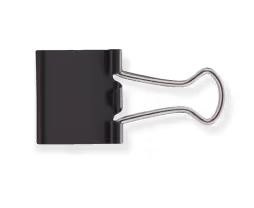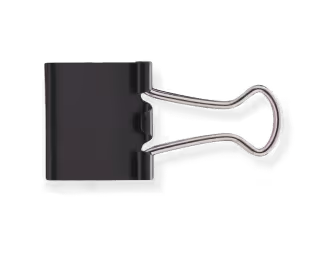Key Takeaways
Top 5 markers of high-quality backlinks:
- The linking site should cover related topics or serve similar audiences to your business.
- A relevant DR 30 link from a niche site can outperform a DR 80 link with no topical connection. Prioritize topical fit over sheer authority. Context is what drives real SEO value.
- Avoid domains with high spam scores (above 30) or unnatural link behavior. Clean, trustworthy link profiles carry far more long-term SEO value.
- The referring domain should have real traffic and engagement
- Links from domains on the same IP block or with identical ownership patterns can look suspicious. A healthy backlink profile includes diverse sources and infrastructure.
What makes a website rank in 2025 is perhaps the most burning question among digital marketers today. One of the answers, besides excellent content and technical optimization, is quality backlinks.
The domain rating (DR) of linking sites essentially indicates to search engines that your website is trustworthy and authoritative. An essential part of off-page SEO, backlinks act as votes of confidence from other websites.
However, not all backlinks are created equal. Some carry tremendous weight, while others, such as reciprocal links from low-quality sites, can actually harm your rankings.
Let us walk you through the exact process of identifying high-value backlinks along with proven tactics to power-pack your link-building strategy.
Do Links Matter for Google Ranking in 2025?
We’ve seen Google downplay the role of backlinks before, but it hit differently when Gary Illyes recently said links haven’t been a “top 3” ranking factor for some time now.
That’s coming straight from a Google Search Quality strategist. And while that’s interesting coming from someone at Google Search, it doesn’t exactly match what we’re seeing play out in the wild.
It’s possible Google doesn’t need links to rank pages in theory. But in practice, high-quality backlinks still pull a lot of weight. The change, from what we’ve observed, is less about whether links matter and more about how they matter.
As for EEAT, we hear it thrown around a lot, but it’s hard to treat it like a measurable factor. It’s not something Google can quantify the way SEOs like to believe.
You can’t train a machine to detect “experience” or “trustworthiness” with any precision, at least not yet. So until that changes, we’d rather trust data over hypotheticals.
Backlinko research shows pages with lots of backlinks consistently rank above pages without them. The #1 result averages 3.8x more backlinks than positions #2-#10.

Links provide measurable data points that algorithms can actually process. That's why they remain powerful ranking signals despite what Google's spokespeople suggest.
Links become proxy signals for authority. In other words, they provide measurable data points that algorithms can process. That's why they remain powerful ranking signals despite what Google's spokespeople suggest.
Second, we're drowning in AI-generated content right now. Every topic has thousands of mediocre articles competing for attention. In this mess, backlinks act as quality filters. They separate real expertise from automated fluff.
What we're noticing specifically:
- Anchor text carries way more weight than before - Google's getting better at understanding semantic relationships between linking text and target pages. A finance blog linking with "investment strategies" tells Google more about your content's relevance than a generic "click here" link.
- At the same time, branded searches are showing up as a strong signal, especially for competitive queries. You’ll notice it when a site that isn’t traditionally “high authority” jumps past others, purely because people are searching for it by name.
In short, links still matter. Probably more now, just in a different way.
But that brings us to the harder question - what counts as a good backlink anymore? It's not as simple as domain authority or how many times a page gets linked. Those surface metrics don't tell the full story.
We've seen plenty of backlinks that check all the traditional boxes yet do nothing for rankings.
So, What Qualifies As Good Backlinks for SEO?
Quality backlinks operate on a spectrum rather than a simple good-or-bad binary. The gold standard is a dofollow link from a relevant, authoritative site using descriptive anchor text. In other words, what really matters is how much authority or "link juice" the link transfers.
Early Google relied heavily on link quantity for rankings. Website owners figured this out fast. They started gaming the system with link farms, comment spam, and paid link networks. Google's Penguin update smashed these tactics by shifting focus completely toward link quality.
The key insight most people miss: link juice distribution isn't equal. A single high-quality backlink from a trusted industry publication can outweigh dozens of directory submissions or blog comments. Quality determines how much ranking power transfers to your page.
What we're seeing now is different evaluation criteria:
- Topical relevance between linking and target pages
- Editorial placement within main content areas
- Natural anchor text patterns that avoid over-optimization
The bottom line remains unchanged, though. Quality beats quantity every single time. One authoritative link beats a hundred weak ones for moving rankings.
Now comes the practical question. How do you actually spot these high-value opportunities when prospecting? Most link builders focus on surface-level metrics like domain rating or traffic numbers.
These help, but they don't tell the complete story. A site might have high DR while still being irrelevant to your niche or audience.
10 Ways to Check if a Website Backlink is High-quality

Sorry, we don’t have a magic spell or anything. There’s no single metric that tells the full story. It takes context, a bit of pattern recognition, and an understanding of how search engines interpret link value. Some signals are obvious. Others are subtle, but just as effective when stacked right.
When we evaluate backlinks, we look at a mix of domain authority, topical relevance, anchor clarity, and how naturally the link sits within the page. These are measurable cues that often correlate with real movement in rankings.
Let’s break them down one by one.
1. Domain Authority and Trust Metrics
Everyone starts here, and for good reason. Relevance is non-negotiable. A high-quality backlink should come from content that’s directly related to the topic of your linked page, not just the general theme of the site.
Domain Rating (DR) from Ahrefs or Domain Authority (DA) from Moz gives you a quick snapshot of a site's link profile strength. These tools essentially try to replicate Google's original PageRank algorithm, which measured how authority flows through link networks.
Caveat: A link from a major news site might look impressive, but if the article isn’t contextually aligned with your topic, it won’t do much. On the other hand, a link from a niche blog that regularly covers your subject? That’s far more valuable, even if its domain rating (DR) is lower.
For instance, a score above 60 is generally strong, but relevance often trumps authority. A DR 30 backlink from a tightly focused, active site in your niche can outperform a DR 80 link that feels out of place.
Look for a balance: the domain should be trusted, indexed, and have some topical alignment with your site. When those three align, the link has real potential to help you rank.
Remember, while Google doesn't publicly update PageRank scores anymore, the underlying principle still drives their algorithm. Authority flows more effectively between topically related sites.
2. Spam Score Assessment
This final check can save you from major penalties down the road. Spam score indicates how likely a domain is to be penalized by Google based on various risk factors. Sites with high spam scores often engage in manipulative practices that can hurt your rankings through association.
Tools like Moz or Ahrefs give a rough estimate of how risky a domain’s backlink profile looks based on patterns often associated with manipulative SEO.
A spam score above 30% can be a red flag, especially if paired with other signs like poor content quality, zero engagement, or suspicious domain history. Even if the backlink looks good on the surface, it might not be worth it long-term.
3. Topical Relevance and Content Alignment
Spray-and-pray approaches in link building don’t get you anywhere today. Google's algorithm has gotten sophisticated at understanding topic clusters and semantic relationships. A backlink from a completely unrelated niche can actually hurt your topical authority.
The sweet spot is finding sites that cover adjacent topics or serve similar audiences. The anchor should give Google a clear signal about what the linked page is about.
A project management tool getting linked from a productivity blog makes perfect sense. The same tool getting linked from a cooking website raises red flags.
Best anchors:
- Match or closely align with your target keyword
- Avoid being too generic (e.g., “click here”)
- Fit naturally within the sentence
4. Editorial Placement Within Content
Location matters more than most people realize. Links buried in footers, sidebars, or author bios carry significantly less weight than those placed within the main article body. Google can distinguish between editorial mentions and promotional placements.
The gold standard is contextual links that fit naturally within the content flow. These typically appear:
- Within the first three paragraphs of an article
- As supporting evidence or examples
- No signs of being forced in for SEO
- In resource lists that add genuine value
5. Referring IP and Class-C IP Diversity
This one tends to fly under the radar but can quietly impact how Google values your link profile. When too many backlinks come from sites hosted on the same IP range, it can look like a network, even if it’s unintentional.
What to check for:
- Links spread across different IP addresses and Class-C IP blocks
- No patterns that resemble private blog networks (PBNs)
- Hosting and server locations that vary across linking domains
- WHOIS data consistency. Avoid clusters of links from domains owned by the same registrant without clear editorial separation
In short, large volumes of links coming from servers clustered under the same IP neighborhood are a good off-site signal. A natural backlink profile includes links from a variety of sources, hosted on different infrastructures. It’s another signal that your links are earned, not manufactured.
6. Natural Link Velocity and Growth Patterns
This factor gets overlooked constantly. Sudden spikes in backlink acquisition can trigger algorithmic penalties, especially if the links come from similar sources. Natural link building happens gradually as content gains organic traction.
Watch for these warning signs when evaluating potential link sources:
- Sites that gained thousands of backlinks overnight
- Domains with unnatural link velocity spikes
- Publishers that seem to link out excessively to random sites
7. Traffic Quality and Audience Engagement
High DR means nothing if nobody reads the content. We've seen sites with impressive metrics that get zero real traffic or engagement. These "zombie domains" provide minimal SEO value and often indicate manipulation.
Check these engagement indicators before pursuing links:
- Organic traffic trends from tools like SEMrush or SimilarWeb
- Social media shares and comments on recent articles
- Email subscriber counts or newsletter engagement
- Average time on page and bounce rate metrics
- Frequency of content publication and reader interaction patterns
8. Co-Citation Patterns and Link Neighborhood
This advanced factor rarely gets discussed but can be a game changer. Google analyzes which other sites are linked alongside yours from the same source. Being mentioned with established authorities in your space strengthens your credibility through association.
The flip side is equally important. If your link appears next to spam sites, low-quality directories, or obviously manipulative placements, it can hurt your standing through guilt by association.
9. Indexation and Crawlability
This basic check trips up many link builders. If Google can't find or index the page linking to you, the backlink's value drops to zero. We see people celebrating link placements on pages that never get crawled all the time.
Before counting any backlink as valuable, verify these technical factors:
- Is the page live and properly indexed in Google's search results?
- Is it buried in a paginated archive or easily accessible through site navigation?
- Is the linking page blocked by robots.txt or noindex directives?
- Does the page load quickly and render properly for search bots?
A simple "site:domain.com/specific-page" search reveals indexation status instantly. No indexation means no SEO value, regardless of the domain's authority.
10. Traffic-Driving Potential
Some backlinks deliver more than SEO value. They bring actual visitors who convert. Those who know what they are doing don't ignore this dual benefit. A well-placed link on a high-traffic resource page can drive immediate results while building long-term authority.
Strong indicators of traffic potential include:
- Pages with real engagement, like comments, shares, and steady organic traffic
- Referral traffic appearing in your analytics post-link placement
- Placement on resource pages or evergreen guides that people bookmark and return to
- Links positioned where users naturally click during their content consumption flow
These eight factors give you a solid framework for evaluating backlink opportunities. Master them, and you'll spot valuable placements that others miss while avoiding time-wasters that look good on paper but deliver nothing.
However, all the high-quality backlinks in the world won't save you if your website itself lacks compelling copy or clear value propositions.
In the B2B SaaS industry, particularly, a website's user experience and conversion optimization hold equal weight with link-building efforts. You're dealing with decision-makers who can distinguish professional presentation from amateur hour instantly.
So if your website consistently underperforms despite acquiring quality backlinks, it might be time to revamp what's often your first point of real interaction with prospects.
The Go-to Agency For SaaS Website Revamp
Link building serves as digital reputation management at scale. It essentially provides the trust signals that tell Google your content deserves visibility in search results.
Evaluating backlink quality requires careful analysis across multiple dimensions rather than relying on single metrics. If you secured high-quality links but conversions remain disappointing, your website design and copy likely need attention.
At Beetle Beetle, we have successfully transformed 50+ websites for leading B2B SaaS startups and mid-size companies across various industries. Our approach combines technical SEO expertise with conversion optimization, ensuring your link-building efforts translate into measurable business results rather than just vanity metrics.
If your backlinks are strong but the results are still invisible, it’s time to rethink what happens after the click. Let’s make every visit count with a strategic website revamp.
Schedule a clarity call today to discuss your requirements and ideas.
Frequently Asked Questions
1. How do I get high-quality backlinks?
Start by creating content that people genuinely want to reference, e.g., original data, detailed guides, or expert commentary. Then build relationships in your niche. Outreach works best when it’s specific, personal, and tied to actual value.
Guest posting, niche directories, interviews, and partnerships can all help, as long as they’re not spammy or transactional.
2. How to check the quality of a backlink?
Look at a few things: Is the linking page relevant to your topic? Is it placed naturally within the body content? Does it use a meaningful anchor? Does the site have real traffic? And is the link on a domain that’s indexed and active? No single factor works alone. Quality is always contextual.
3. Which is the best tool to check backlinks?
Ahrefs leads for comprehensive backlink analysis with accurate data and a user-friendly interface. SEMrush offers solid alternatives with additional SEO features.
Moz provides good basic metrics but less detailed link data. For budget options, Google Search Console shows your actual backlink profile from Google's perspective.
4. What is a good backlink score?
When discussing Domain Authority (DA) scores, anything above a 30 DA from relevant sites provides decent value. Sites with 50+ DA carry significant weight, while 70+ DA domains offer premium link equity.
However, relevance matters more than raw DA numbers. A 25 DA industry publication often outperforms a 60 DA general news site.
The score helps, but don’t obsess over it.
































